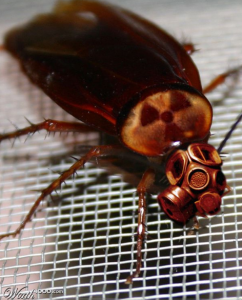There are certain places where a chemical will not go, a bait won’t entice and the technician has not time for:
I’ve often said, “Give me just one ounce of spray and I can achieve a thousand times better results than a home owner who has a gallon.” The reason? It is as simple as knowing some principles. The following is #1 of our series of three but there are many more. If, however you were to just take these and apply them with even a little knowledge of your target, you’d improve your pest control treatments immensely.
Time
The magic of time is the hardest ideal to get across to anyone bar none. We want our bugs dead now and if what we’re paying for doesn’t do the trick instantly we are disappointed. The sprays should just FRY the little suckers and even draw the ones hidden deep in the walls out with some sort of lure and mass carnage better result in the first day or else! Oh by the way, I also have kids, pets, birds and I’m pregnant so it better not be harmful. Ok, I think I have some of that in my truck. Look, there are no magic elixirs that fit the bill above. Oh there are plenty that when used correctly do a number on bugs and pose little risk to you and your loved ones but almost all of today’s product need TIME.
They Have Defenses
You see, insects aren’t defenseless and insecticides aren’t omniscient. (able to be everywhere at all times) Many insects for instance have a waxy/greasy substance on their exoskeletons. (shell) Holding in moisture is its main function but it can also hold pesticides out. The pesticide needs to break through this coating before it can reach the target inside. Bugs can also avoid treatments using their antennas or other appendages that can detect even the most miniscule amounts of a toxic substance. The list can go on and on of how insects aren’t just easy prey to a can of spray. Suffice to say they’ve been around since the dawn of time and if they were so easily killed they would probably be extinct right now. You just have to recognize that for certain defenses to be broken down, you’ll need to give it time.
waxy/greasy substance on their exoskeletons. (shell) Holding in moisture is its main function but it can also hold pesticides out. The pesticide needs to break through this coating before it can reach the target inside. Bugs can also avoid treatments using their antennas or other appendages that can detect even the most miniscule amounts of a toxic substance. The list can go on and on of how insects aren’t just easy prey to a can of spray. Suffice to say they’ve been around since the dawn of time and if they were so easily killed they would probably be extinct right now. You just have to recognize that for certain defenses to be broken down, you’ll need to give it time.
All Powerful Chemicals
In the old day’s the target was the nervous systems of the individual bugs treated but we are so much more sophisticated now. Modern products can affect molting, eating, reproduction and even the jaws of an insect which will cause it to starve. These targeted treatments are also dispersed through the insects own habits of grooming, sharing food or cannibalism and these processes don’t occur right away even after a successful treatment. Many sprays are also non-repellant so it seems as if your pest has walked right through a treated area undaunted. This works to your advantage although at the time it seems odd that a bug wouldn’t be affected in some way. Even with the more traditional products there are limits as to where you can put them. Hosing down a ceiling for a spider causes nothing but an unsafe mess for example. So limiting factors as to how much and the locations of application will all factor in to how fast the pests will get enough exposure to a treatment to get enough to die.
Conclusion
Put these two factors together and you’re left with two choices. #1- Douse the room with more and more pesticides which is unsafe and still ineffective or #2, rely on your placements and let the magic of time have her way. Since it takes time in most cases for a bug to be  affected for whatever reason, this approach only makes sense. Believing in the residual barrier you’ve treated with will actually work better since it is lighter, less detectable and in the case of non-repellants, affects far more than those who physically came in contact with it. You just have to put your plan in place whether it’s baits, sprays, powders or traps and then apply the most effective ingredient of all.
affected for whatever reason, this approach only makes sense. Believing in the residual barrier you’ve treated with will actually work better since it is lighter, less detectable and in the case of non-repellants, affects far more than those who physically came in contact with it. You just have to put your plan in place whether it’s baits, sprays, powders or traps and then apply the most effective ingredient of all.
Time.




